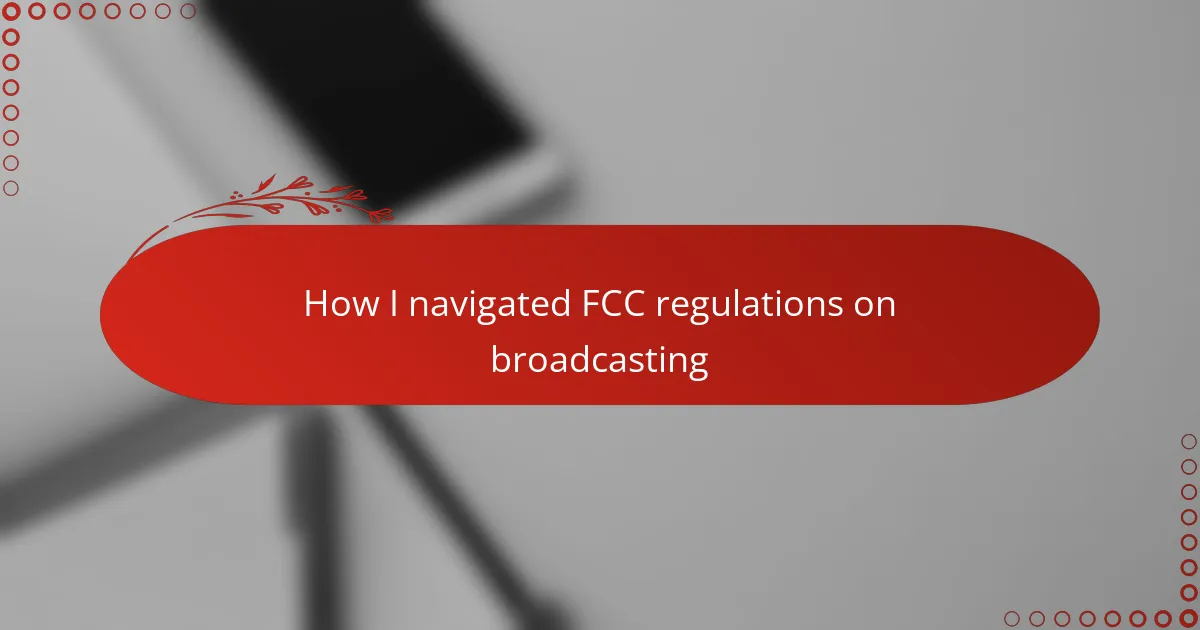Key takeaways
- Breaking down FCC regulations into manageable sections helps ease the learning process and highlights their importance in protecting both broadcasters and listeners.
- Staying updated with FCC policies is crucial, as regulations often change, requiring broadcasters to adapt their operations accordingly.
- Developing a compliance checklist and fostering relationships with industry mentors enhance understanding and navigation of complex regulations.
- Proactive review sessions can prevent compliance issues, making the broadcasting process smoother and more efficient.
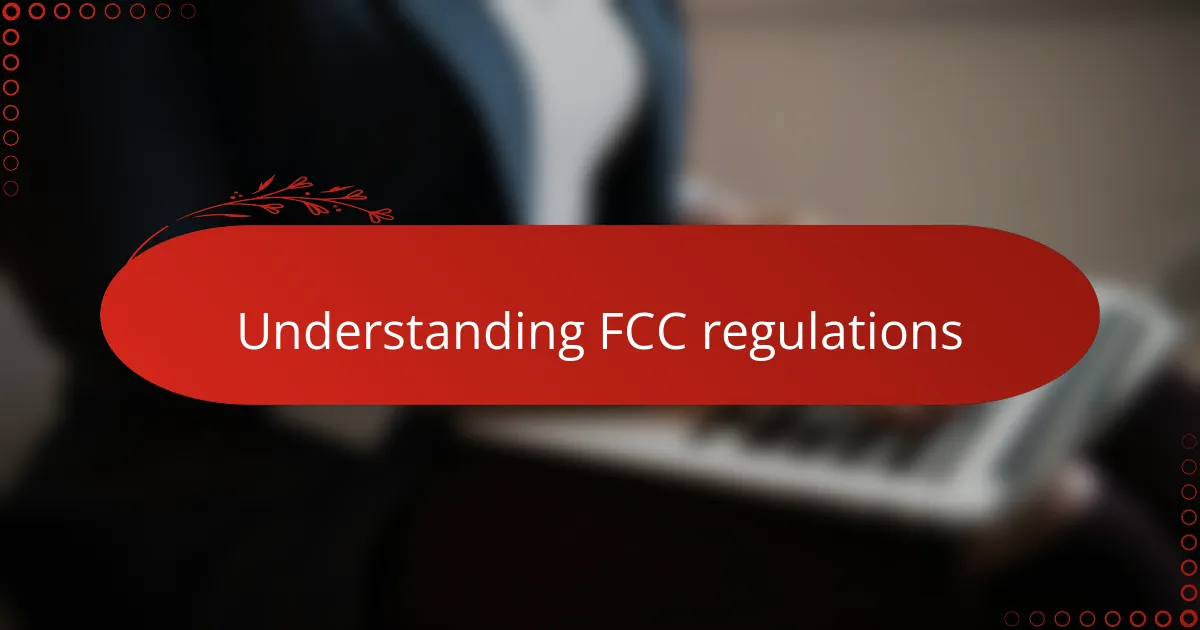
Understanding FCC regulations
When I first dove into FCC regulations, I felt overwhelmed by the sheer volume of rules and technical jargon. Have you ever stared at a dense legal document and wondered where to even start? For me, breaking the regulations down into manageable sections made the process feel less daunting and more achievable.
One important thing I learned is that these rules aren’t just red tape; they’re there to protect both broadcasters and listeners. Understanding the intent behind the regulations gave me a new appreciation for why compliance matters, especially when it comes to licensing and content standards. It made me realize I wasn’t just following rules—I was helping maintain the integrity of the airwaves.
I also discovered that staying updated is key because the FCC often revises its policies. At times, this meant late nights reading updates and adjusting my station’s operations accordingly. Although it was challenging, this continuous learning process made me more confident and proactive as a broadcaster. Have you tried keeping pace with changing regulations? It’s a test, but one worth taking.
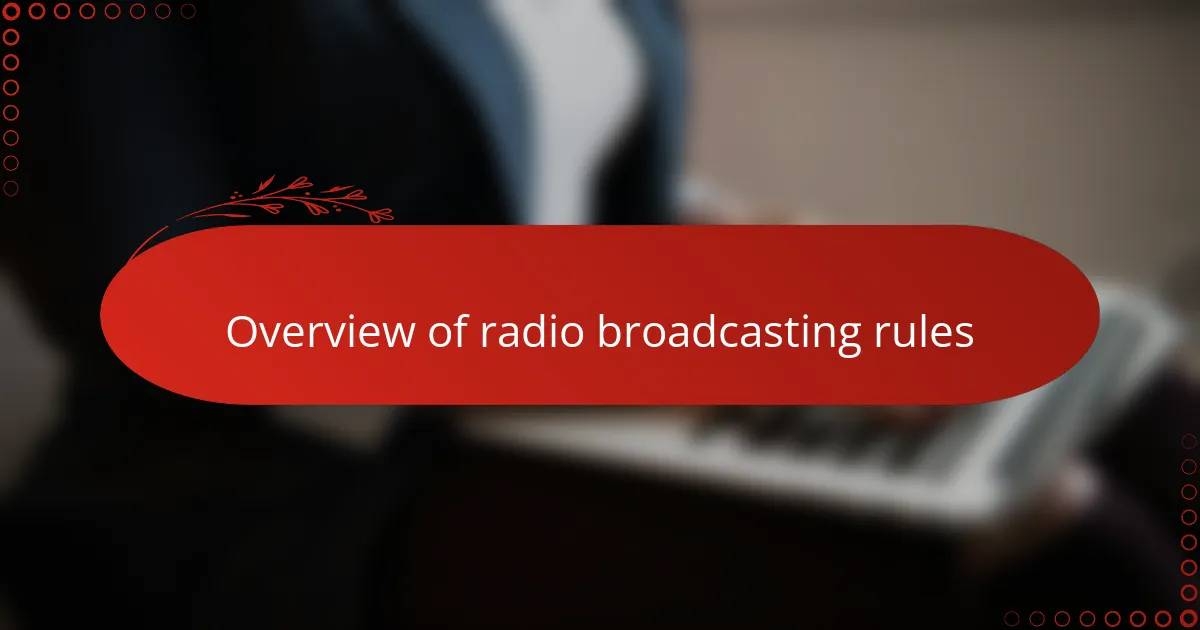
Overview of radio broadcasting rules
Radio broadcasting rules cover everything from technical requirements to content guidelines. When I first encountered them, I realized they shape how we operate our stations daily—from signal strength limits to ensuring what we air is appropriate and lawful. Did you know these regulations help prevent interference between stations? That fact alone showed me how vital the rules are for keeping the airwaves orderly.
One thing that stood out to me is the licensing process, which feels like both a gatekeeper and a roadmap. Navigating it taught me patience and attention to detail because missing one form or deadline could stall the whole operation. Have you ever felt stuck waiting on paperwork? I sure have, and it made me appreciate the structured system behind the scenes.
The technical rules around equipment and frequencies might sound dry, but they’re the backbone of good broadcasting. I remember adjusting my transmitter settings for hours, trying to comply exactly with FCC specs—it was frustrating but rewarding when I finally got it right. These rules aren’t just regulations; they’re practical guides that keep our signals clear and our audiences connected.
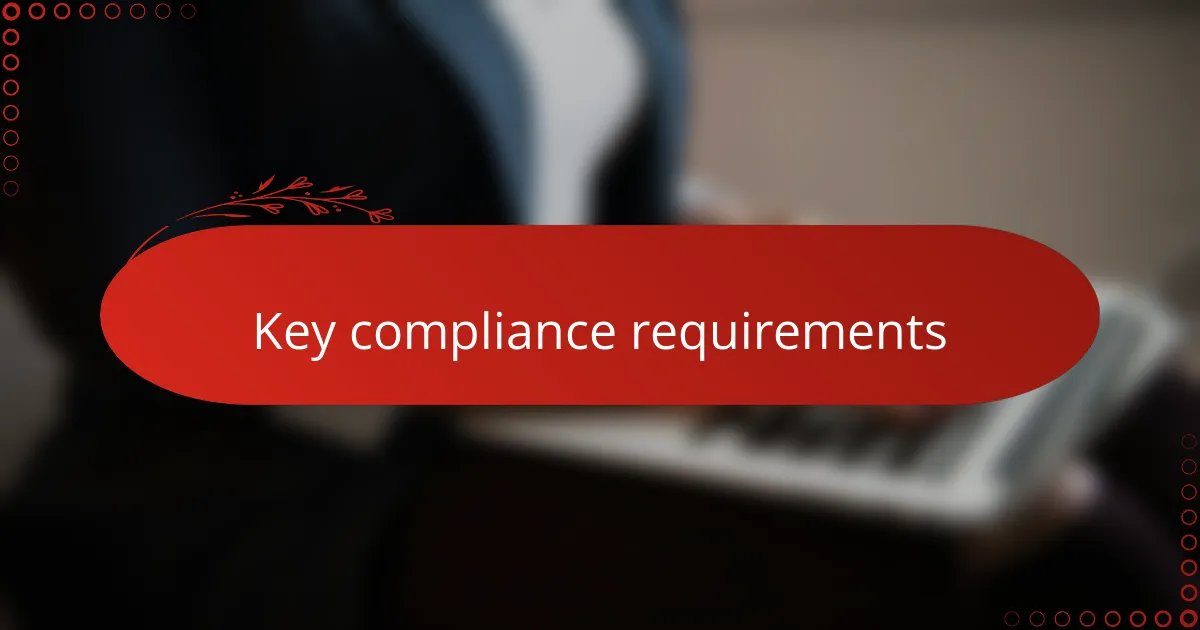
Key compliance requirements
One of the first compliance hurdles I encountered was ensuring my station met the FCC’s strict licensing requirements. It wasn’t just about submitting forms on time; it was about fully understanding what operating conditions I had agreed to. Have you ever been caught off guard by a subtle license term? Those moments taught me the importance of double-checking every detail.
Then, there’s the matter of content regulations. At first, I underestimated how carefully I needed to monitor what aired on my station. After a close call with indecent content rules, I set up a robust review process. That experience made me realize compliance isn’t just legal—it’s about protecting my station’s reputation and my own peace of mind.
Technical compliance also demanded my full attention. Managing transmitter power limits and avoiding signal interference required meticulous adjustments. I recall late nights calibrating equipment, feeling frustrated yet determined. It made me appreciate how these technical rules are like the silent guardians of the broadcast world, ensuring every listener gets a clear, uninterrupted signal.
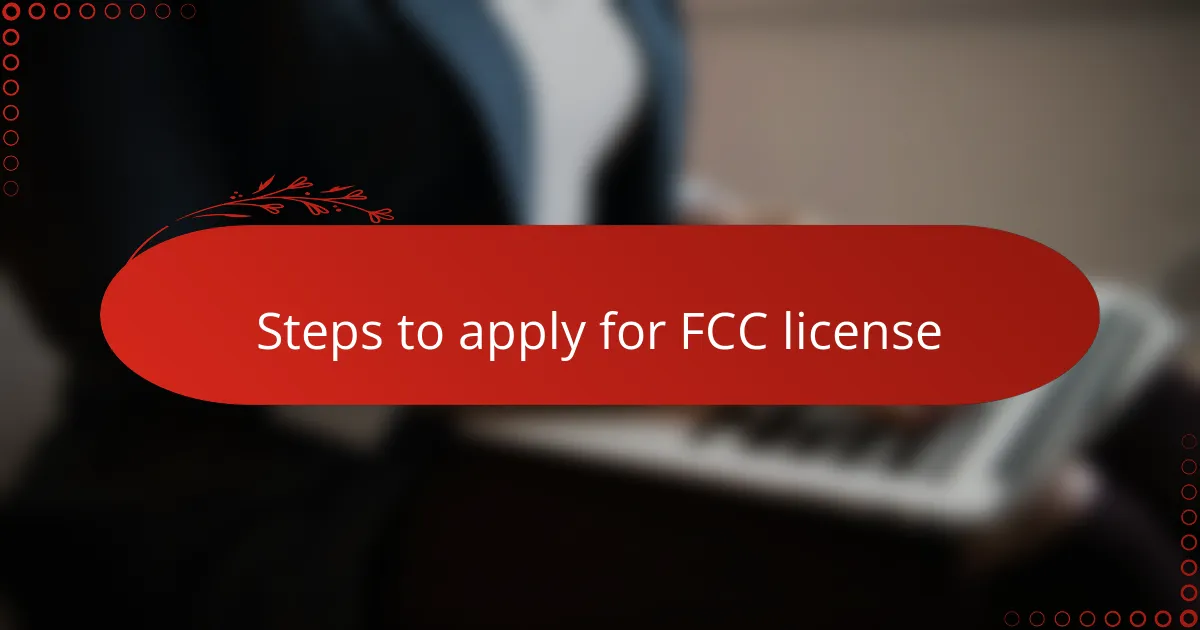
Steps to apply for FCC license
Applying for the FCC license felt like navigating a maze at first. The very first step was gathering all the necessary documentation, from proof of eligibility to detailed technical plans. Have you ever tackled a mountain of paperwork that seemed endless? For me, organizing everything into clear folders really helped reduce that overwhelm.
Next came filling out the actual application forms on the FCC’s online portal. It was tedious—each section requiring precise information about the station’s location, equipment, and ownership. I learned quickly that rushing through this part leads to mistakes and delays. Taking my time to review every detail made the difference between a smooth submission and having to start over.
Finally, after submitting, the waiting period tested my patience like nothing else. I found myself constantly checking emails for updates and double-checking if anything else was needed. It was a lesson in persistence and staying calm, reminding me that the FCC process isn’t just paperwork—it’s a careful vetting to ensure broadcasters meet their responsibilities. Did I feel nervous waiting? Absolutely—but it was worth it once the license came through.

Common challenges faced
One challenge I often faced was decoding the dense legal language the FCC uses. Have you ever tried interpreting complex regulations without a legal background? I remember feeling stuck until I started highlighting key points and making my own plain-language notes—it was a game changer.
Another hurdle was keeping up with the constant rule changes. There were times I’d just get comfortable with one set of guidelines, only to find new updates rolling out. This pressured me to stay vigilant, turning what felt like a chore into a routine part of my broadcasting day.
Then, the biggest stress for me was handling compliance audits. Knowing that an FCC inspector could show up at any time made me double-check every detail—from logs to equipment settings. Honestly, those moments kept me on my toes but also taught me discipline and proactive maintenance.

Strategies for successful navigation
One strategy that really helped me was building a reliable compliance checklist tailored to my station’s specific operations. Have you ever tried juggling multiple tasks without a clear list and ended up overwhelmed? Keeping everything documented and up-to-date saved me from scrambling during audits or deadline crunches.
Another tactic I found invaluable was developing a relationship with a knowledgeable mentor in the industry. Whenever I hit a tricky regulation or just needed a reality check, having someone to bounce ideas off made a huge difference. Sometimes, the rules seem like a maze, but guidance transforms that maze into a clear path.
Finally, I made it a habit to schedule regular review sessions—not just when something went wrong. By proactively revisiting the regulations and my compliance status, I caught potential issues before they became real problems. It’s like routine maintenance for your car; it might feel tedious, but it keeps everything running smoothly and stress-free. Have you tried being proactive rather than reactive? I swear it’s a game changer.
